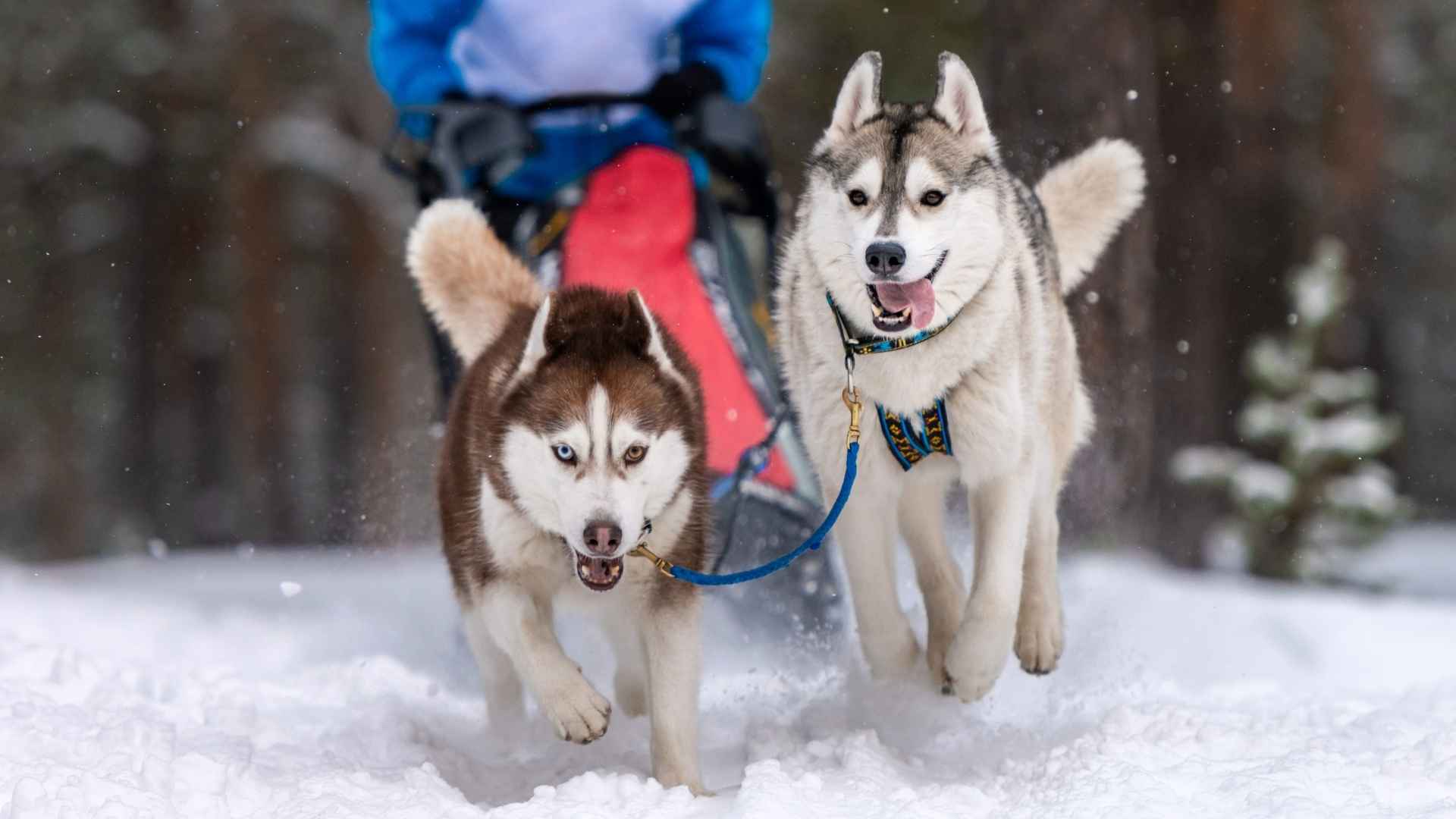There’s something breathtaking about a pack of dogs racing through snow, their powerful legs pounding the ice and tails flying like flags in the wind. These are sled dog breeds—canines built for the cold, born to run, and loyal to the core, just like their dedicated mushers. From ancient Arctic expeditions to modern-day mushing, these dogs have been pulling more than just sleds; they’ve been carrying stories of survival, strength, and spirit.
With thick coats, tireless energy, and teamwork in their DNA, sled dogs are more than just winter workers—they’re adventure partners. Think Siberian Huskies, Alaskan Malamutes, and even the lesser-known Greenland Dogs. These breeds are smart, affectionate, and thrive in active homes, especially where chilly climates are welcomed.
Whether you’re a snow-lover looking for the perfect winter companion or simply fascinated by dogs that can outpace snowmobiles, this guide to sled dog breeds, including sled dogs today, is your perfect starting point. Bundle up—these pups are ready to pull you into their world.
Sled Dog Breeds
1. Siberian Husky
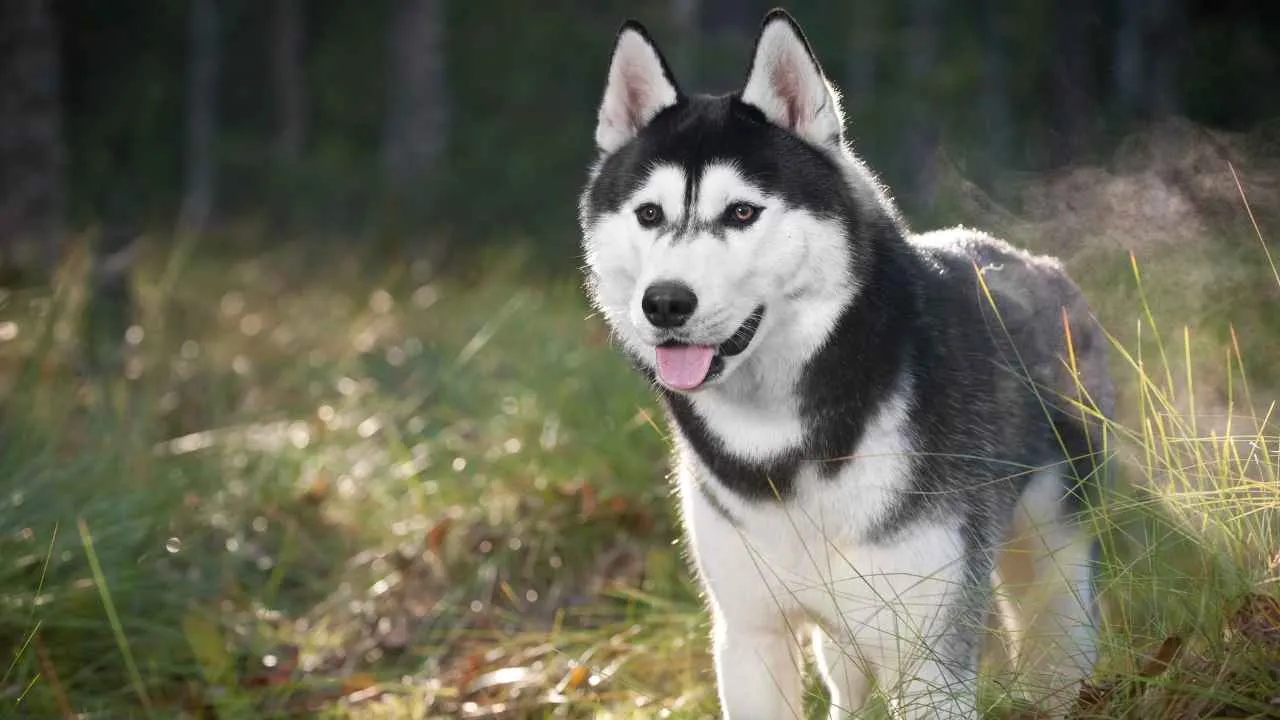
The Siberian Husky isn’t just a pretty face—though let’s be honest, that icy blue stare could melt a glacier. Bred by the Chukchi people of Siberia, these dogs were designed for endurance, speed, and carrying loads across the tundra. They’re the OG Arctic Uber—fast, reliable, and always ready for a scenic route.
Known for its wolf-like appearance, the Siberian Husky has a thick double coat, erect triangular ears, and expressive almond-shaped eyes, often in shades of blue, brown, or even one of each (heterochromia).
Why we love them
Energy for days – These guys are like furry Red Bulls. They don’t get tired; they get going.
Independent thinkers – Translation: They’ll listen to you… But only if it aligns with their current mood.
Natural escape artists – Secure your fences. These pups will find their way out and be halfway to Canada before you notice.
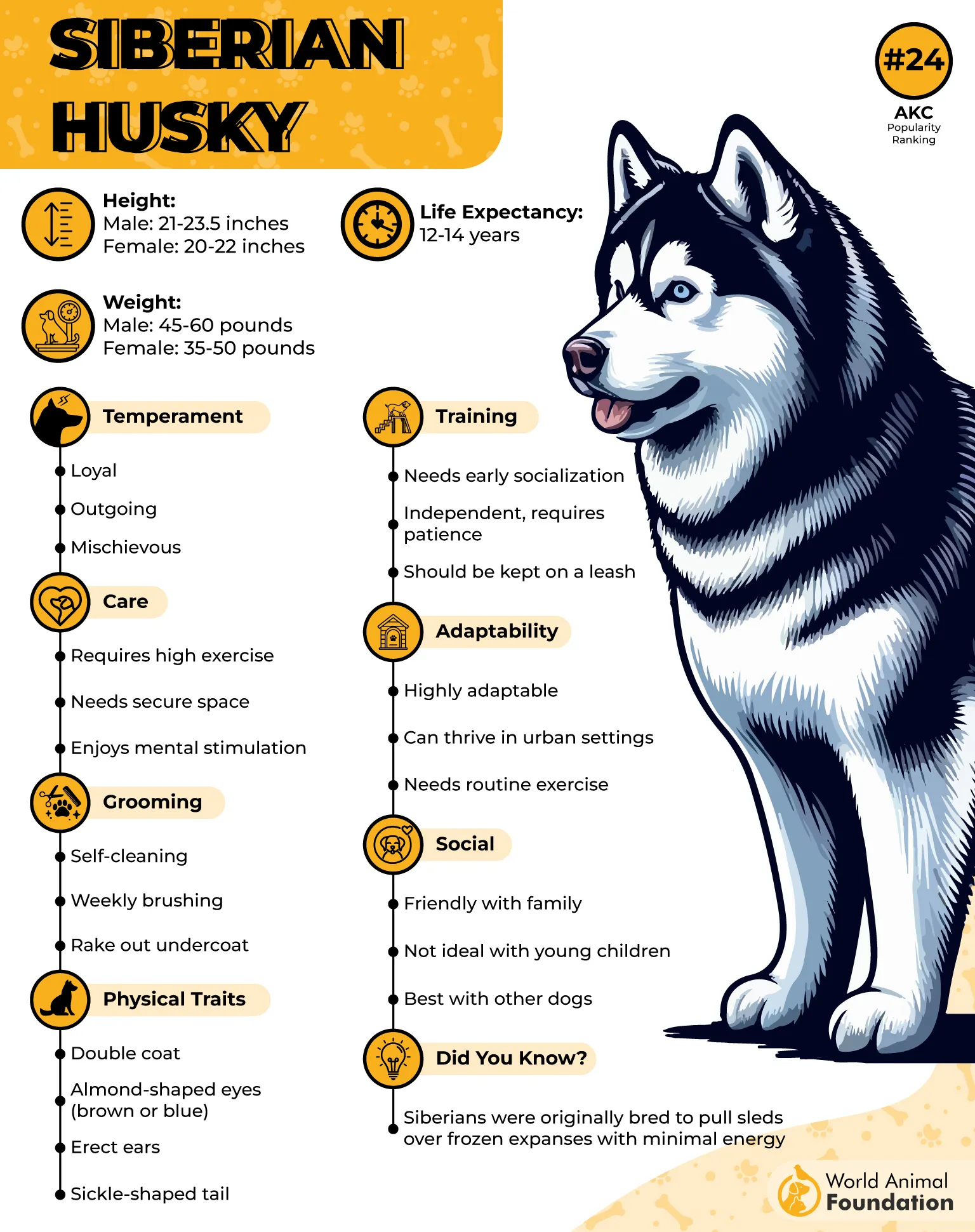
Despite their stubborn streak, Huskies are loyal, affectionate, and surprisingly healthy dogs who love being part of a pack. Just be prepared for a bit of sass and a lot of “talking”—Huskies are known to howl, “woo,” and argue like toddlers when it’s bath time.
2. Samoyed
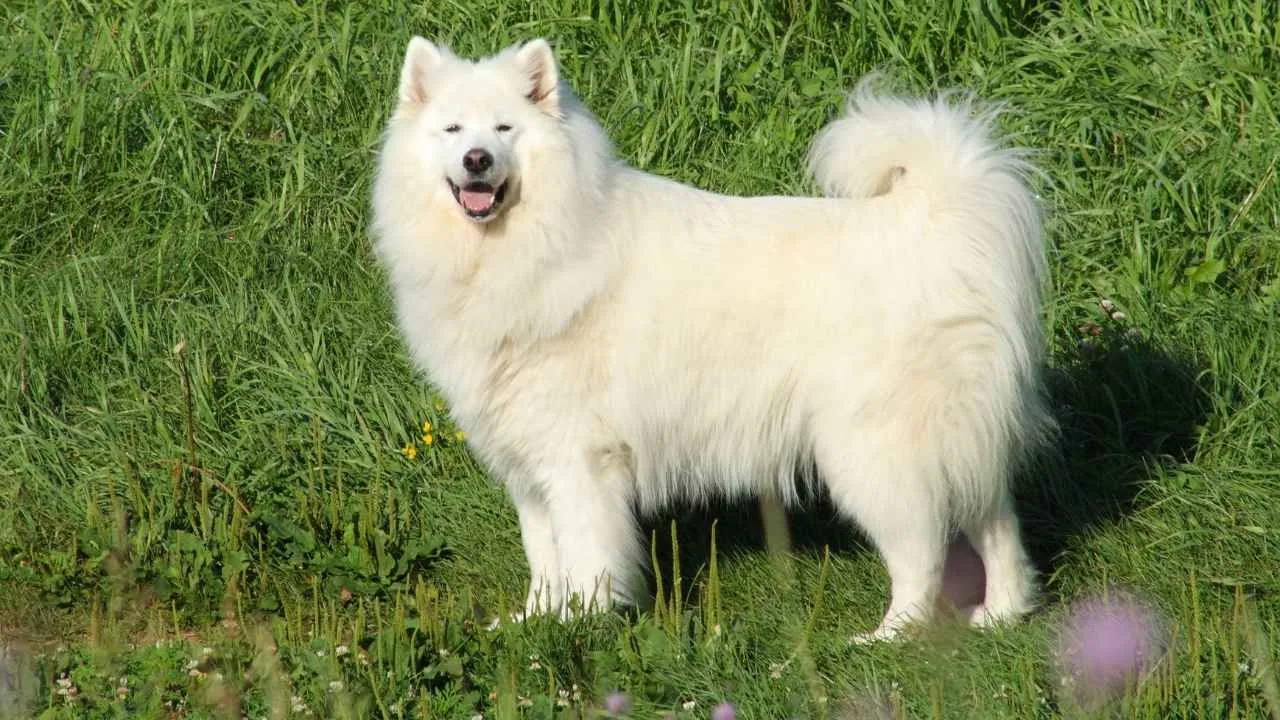
Ever seen a dog that looks like a snowball with legs? Say hello to the Samoyed, a sled-pulling, people-loving puffball known for its signature “Sammy smile.” These dogs were bred by the Samoyede people of Siberia not only to pull sleds but also to keep their humans warm at night. Yes, they are cuddle-powered heaters.
Why we adore them
Social butterflies – Samoyeds love everyone. And we mean everyone. Strangers? Friends. Mailman? Best friend. Burglar? “Can I show you where the good snacks are?”
Fluff overload – Their dense, double coat can withstand Arctic winters, and generate enough shed fur to knit a sweater every week.
Built-in positivity – With their perpetual smile, these dogs could cheer up a stone.
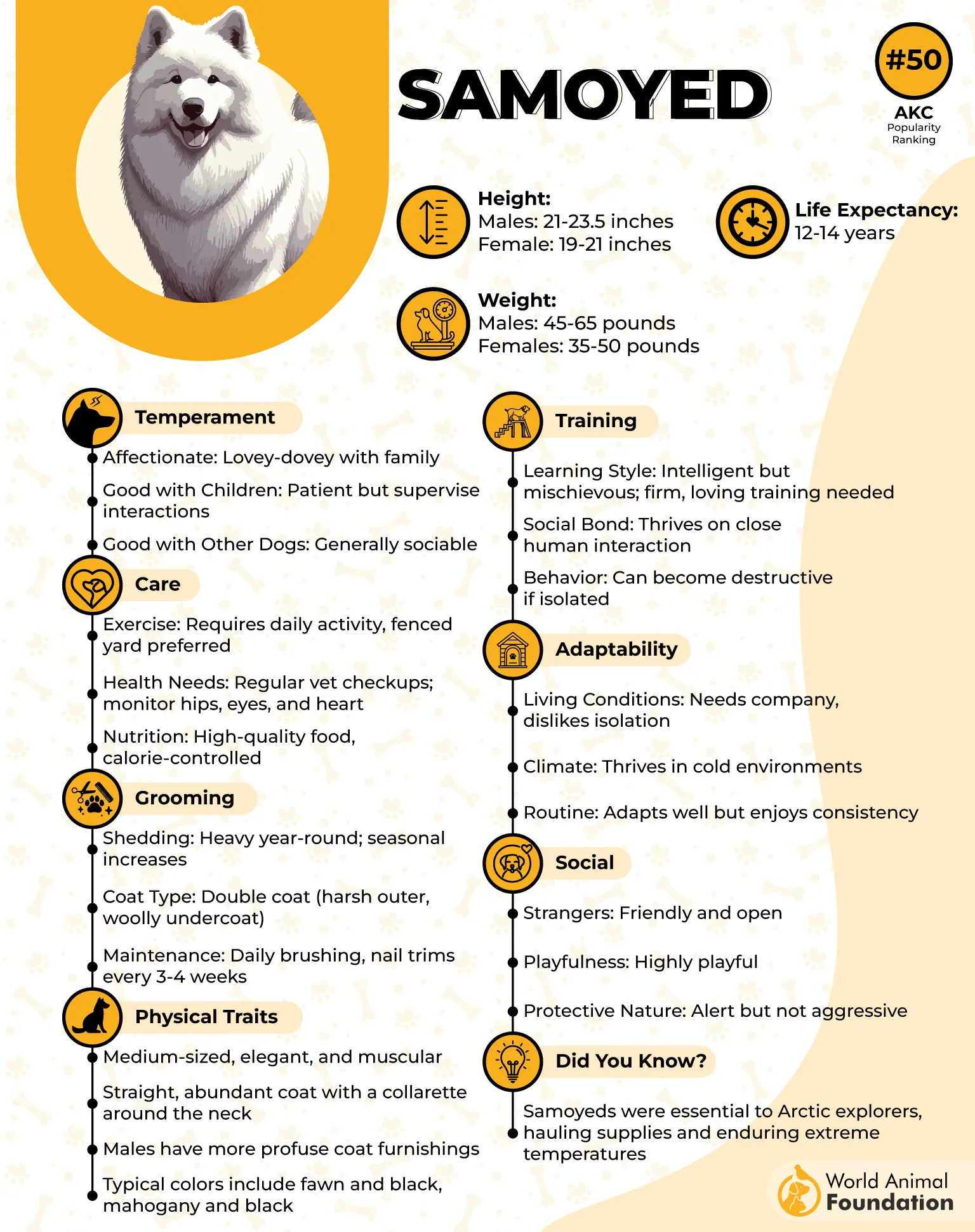
They are often described as being “people-oriented” and get along well with children, making them excellent family pets. While they are social and enjoy being around their human companions, Samoyeds can be independent and sometimes stubborn, requiring consistent training and firm, positive reinforcement.
Samoyeds are intelligent, gentle, and ready to be your best friend from day one. Just be warned: with that majestic white coat, mud is their worst enemy (and yours).
3. Norwegian Elkhound
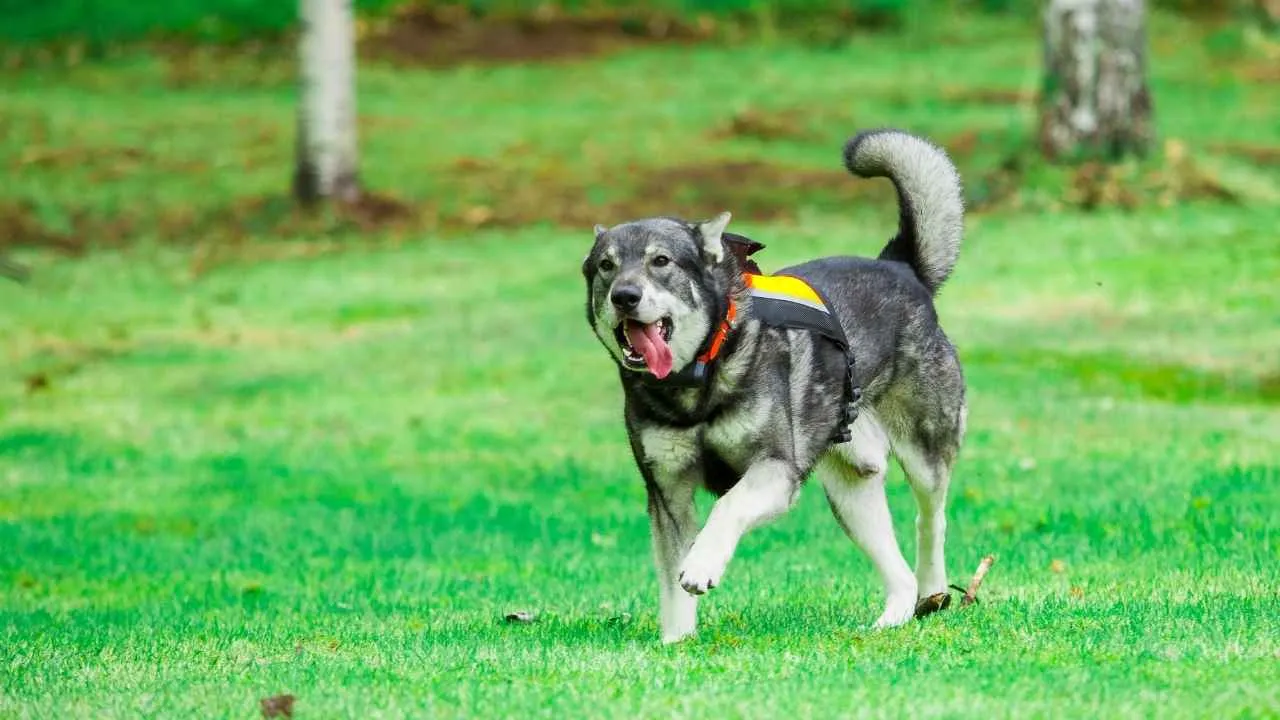
The Norwegian Elkhound is the Nordic myth come to life—fearless, noble, and ready to battle a moose if necessary. Originally bred to hunt large game (yes, including actual elk), this breed is a national treasure in Norway. Think of these medium-sized dogs as the all-purpose Viking companion—sled pulling, guarding, herding reindeer, hunting, and napping in front of the fire.
Why they rock
Confident and bold – This dog walks like it’s got a battle to win and a saga to be written.
Super loyal – They’ll guard your home, heart, and possibly your snacks (for “safety reasons”).
Talkative – They don’t bark, they announce. Loudly. And often.
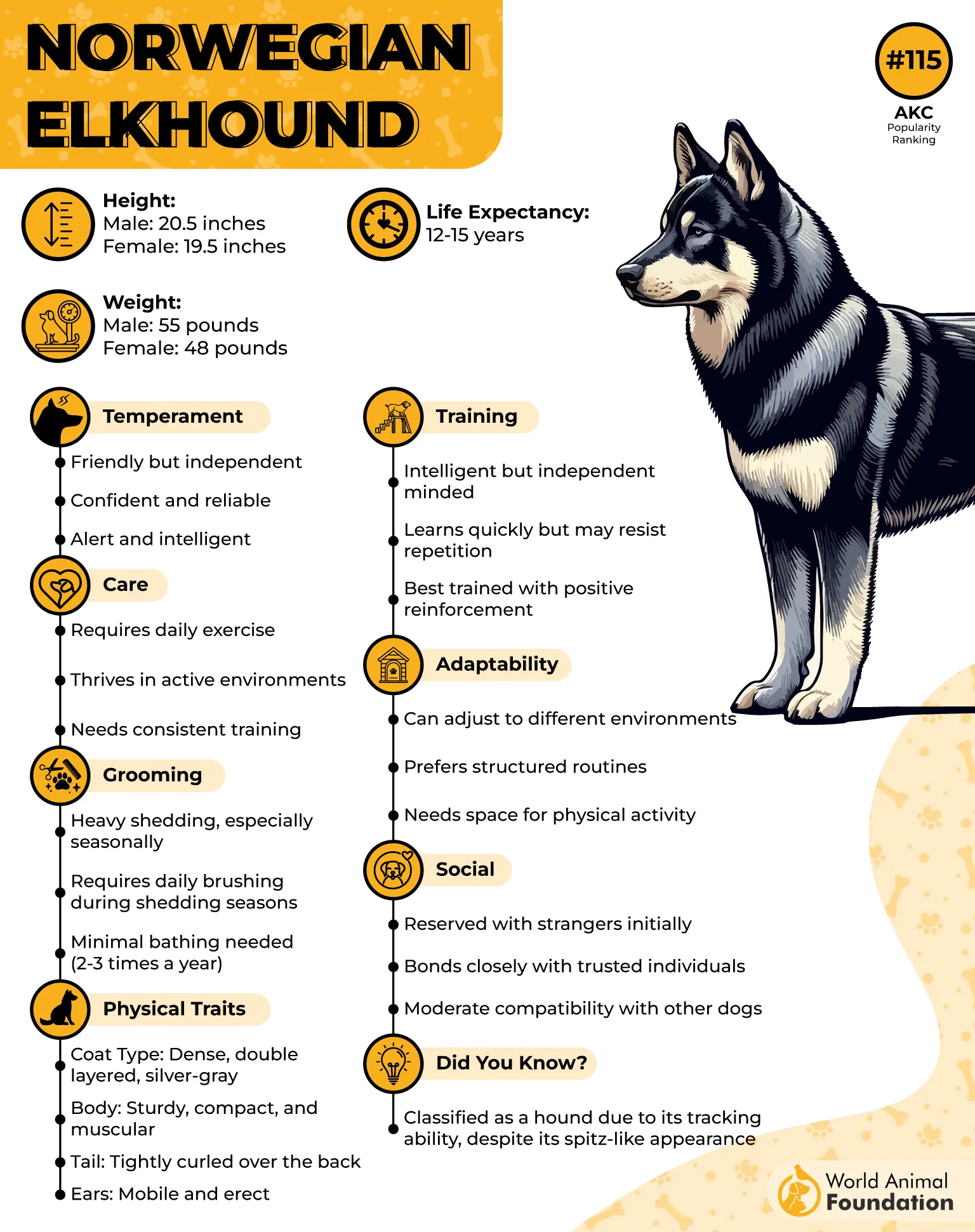
With their thick double coat and curled tail, the Elkhound looks perpetually proud—and rightfully so. Just don’t expect them to blindly follow orders. They’re more “suggestion box” than “yes, sir.”
While they are highly trainable, they can also be stubborn and have a strong sense of independence, which may make training a challenge for less experienced owners. They are loyal, brave, and protective, often serving as guard dogs while also being affectionate with their families.
4. Yakutian Laika
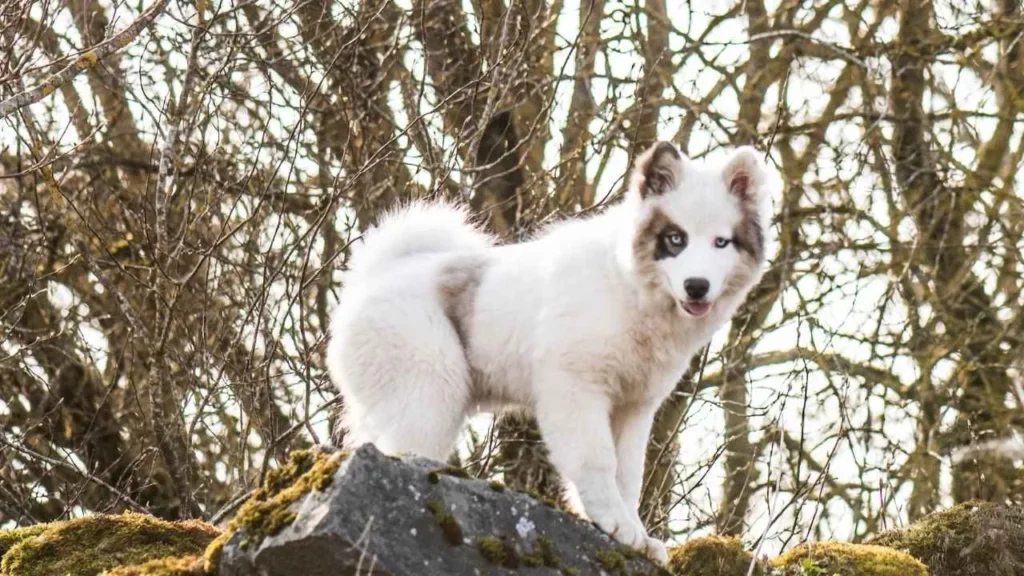
Meet the Yakutian Laika, the snow-loving beauty hailing from the icy wilderness of Siberia. This ancient breed has done it all—herding, hunting, and pulling sleds through blizzards like it’s just a casual morning jog. Oh, and they look like someone crossbred a wolf with a snow angel.
Known for its incredible endurance and agility, the Yakutian Laika is well-suited for cold-weather tasks and is highly skilled at hunting small game like squirrels and birds.
Why you’ll fall for them
Gentle yet energetic – Sweet with family, zoomie-prone in the backyard.
Cold-weather champs – They laugh in the face of frostbite (and probably eat snow for fun).
Stunning looks – Think arctic wolf meets supermodel.
It is known for being loyal and protective, making it a good guard dog, though it can be reserved or aloof with strangers. This breed requires a lot of exercise and mental stimulation, and can be a challenge for inexperienced owners due to its independent nature.
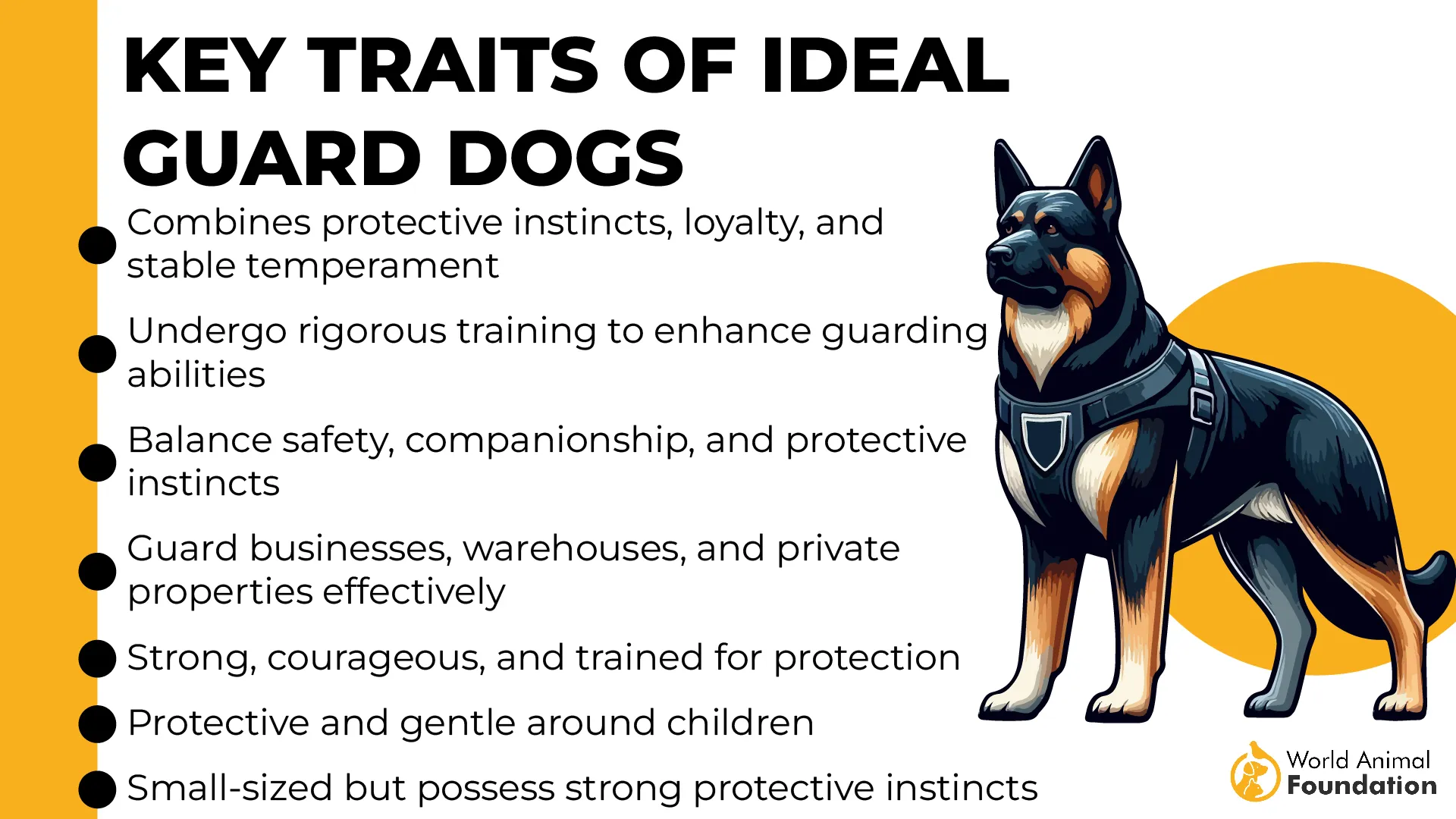
Warning: Their beauty may lead to frequent photo ops, so prepare their modeling contract early.
5. Alaskan Malamute
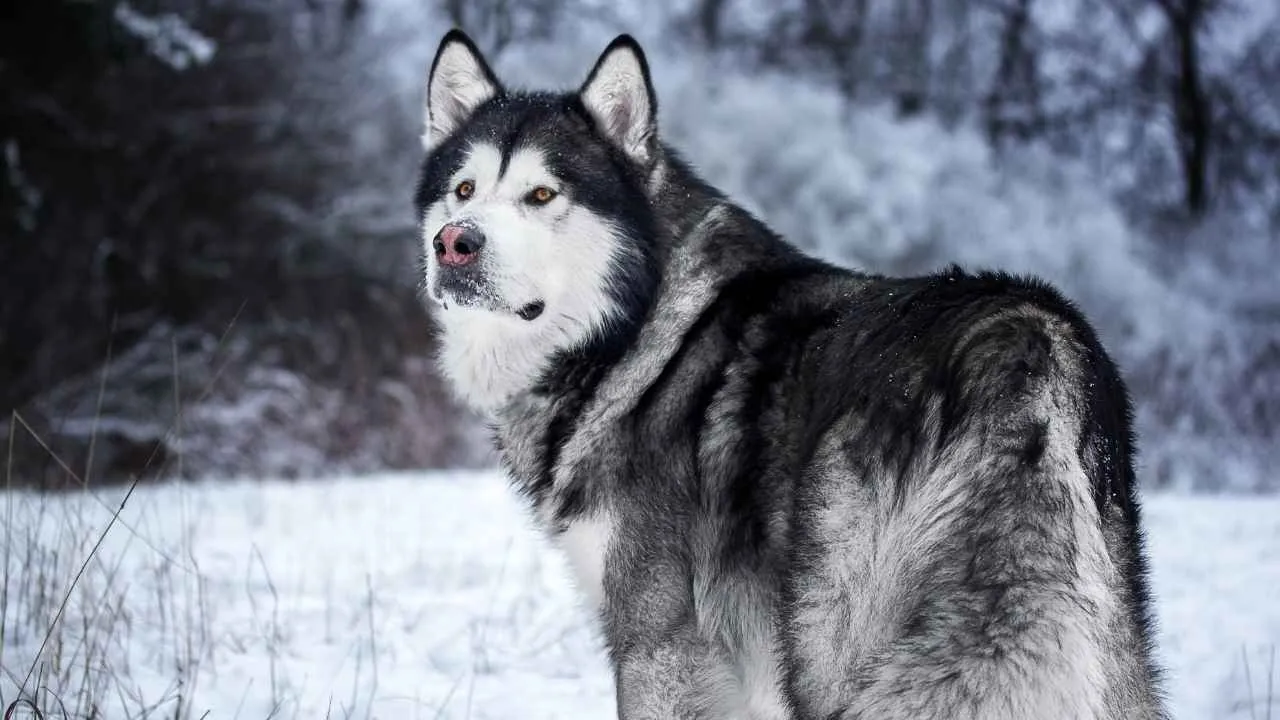
The Alaskan Malamute is the powerlifter of the sled dog world. Massive, majestic, and full of fluff, this breed was built to haul heavy loads across long distances. If the Siberian Husky is the sports car of sled dogs, the Malamute is the rugged off-road truck that doesn’t quit, often competing in long-distance races.
According to the American Kennel Club (AKC), Malamutes have almond-shaped brown eyes with an affectionate sparkle, hinting that they enjoy snuggling with their humans once the workday is over.
Their erect, pointy ears are set wide apart, contributing to their wolf-like appearance, and their expressive eyes are typically brown or blue, exuding an intelligent and loyal demeanor.
Why they impress
Strong and sturdy – These dogs could probably tow your car. Uphill. In the snow.
Friendly giants – Super affectionate, especially with their human pack.
Fluff level: Maximum – You’ll find fur in places you didn’t even know existed.
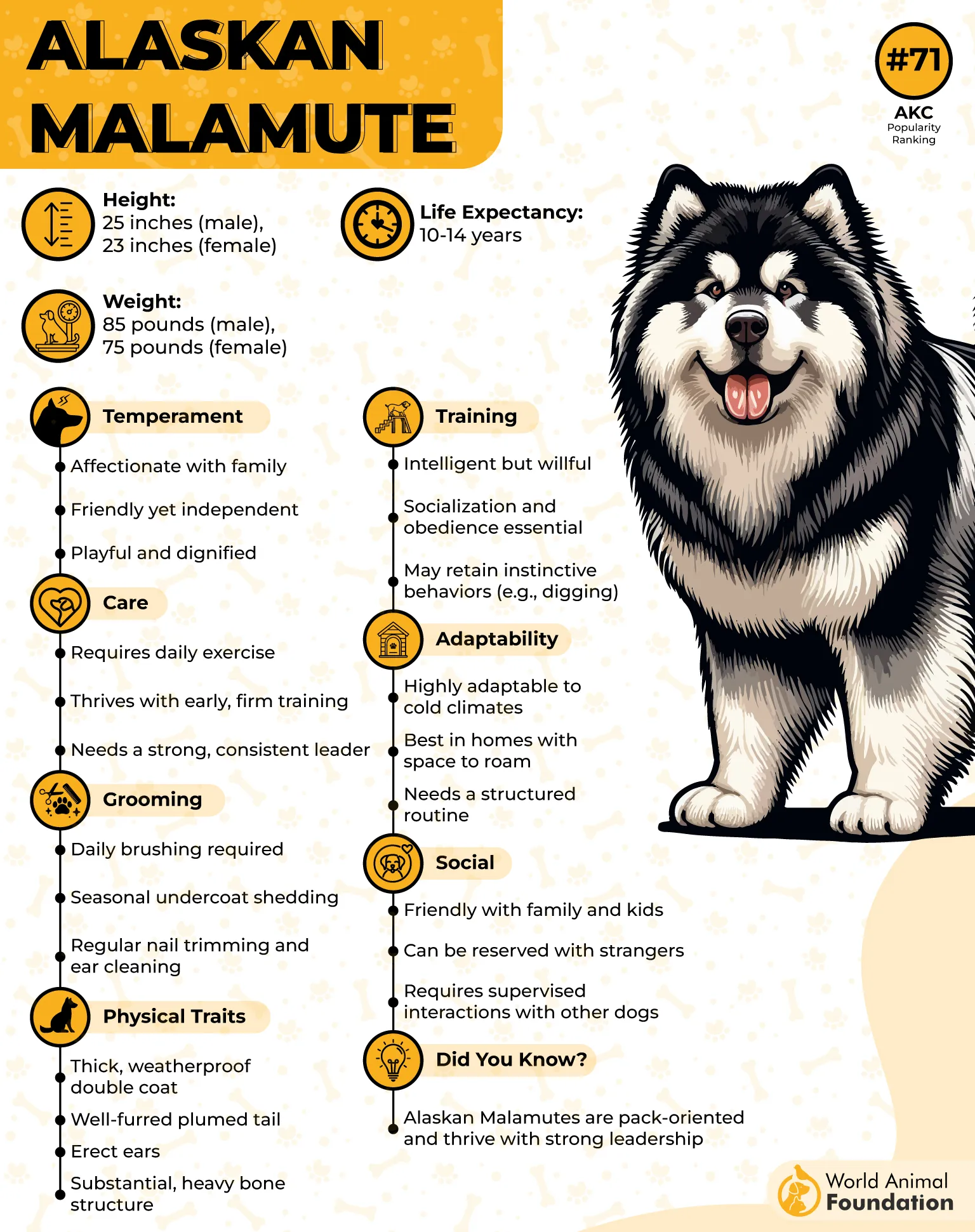
But don’t let the size fool you—Malamutes are giant goofballs. They’ll greet you with a wag and a woo, and possibly sit on your lap like a 90-pound lapdog with zero concept of personal space.
The breed thrives on physical activity and enjoys pulling, hiking, and other outdoor adventures. While generally friendly with people, Malamutes can be territorial around other dogs and have a strong prey drive. With proper care and socialization, the Alaskan Malamute is a majestic and loving dog that reflects the spirit of the Arctic.
6. Chinook
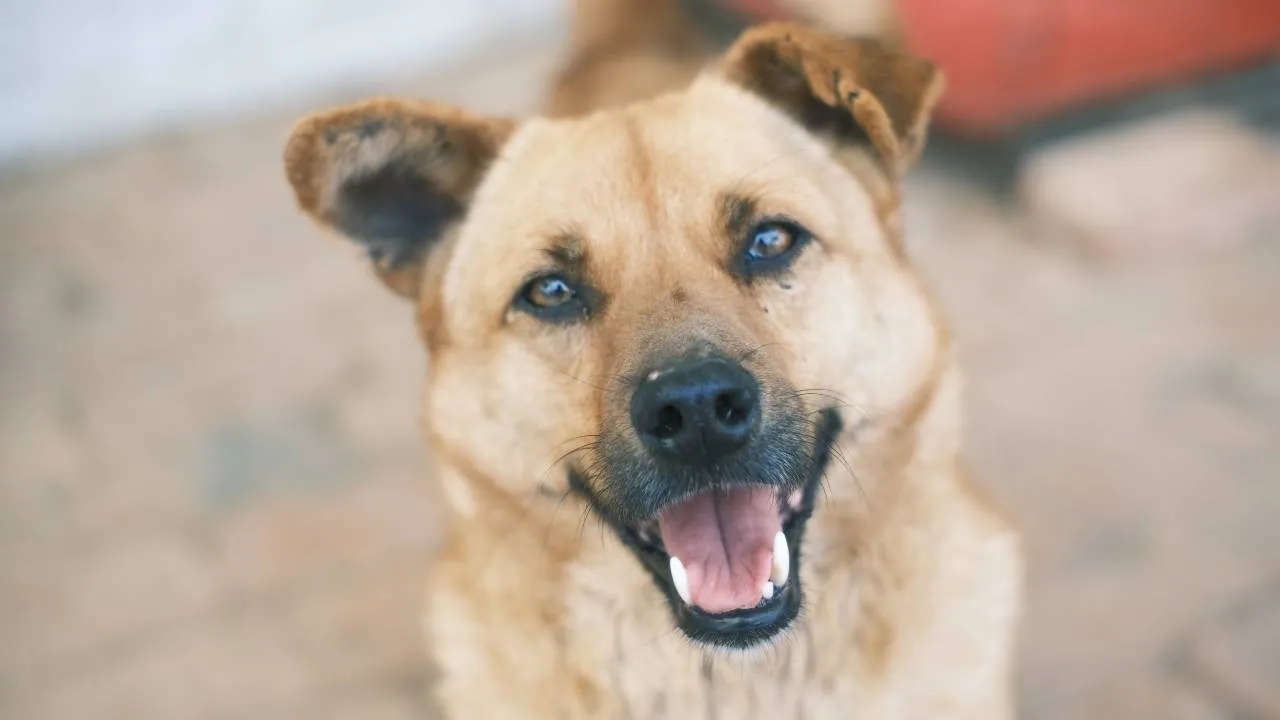
The Chinook is the New Hampshire native of the sled dog world—and yes, it’s basically the official state dog (how fancy!). Originally bred by explorer Arthur Walden for polar expeditions, the Chinook blends the strength of a freight hauler with the heart of a therapy dog.
Why they’re special
Super sweet temperament – Friendly, calm, and gentle with kids, cats, and probably the neighbor’s goat.
Rare and precious – Seriously, they’re like the unicorn of sled dogs. Only a few hundred exist!
Smart but chill – They’ll learn commands quickly, then politely wait for their turn on the sled.
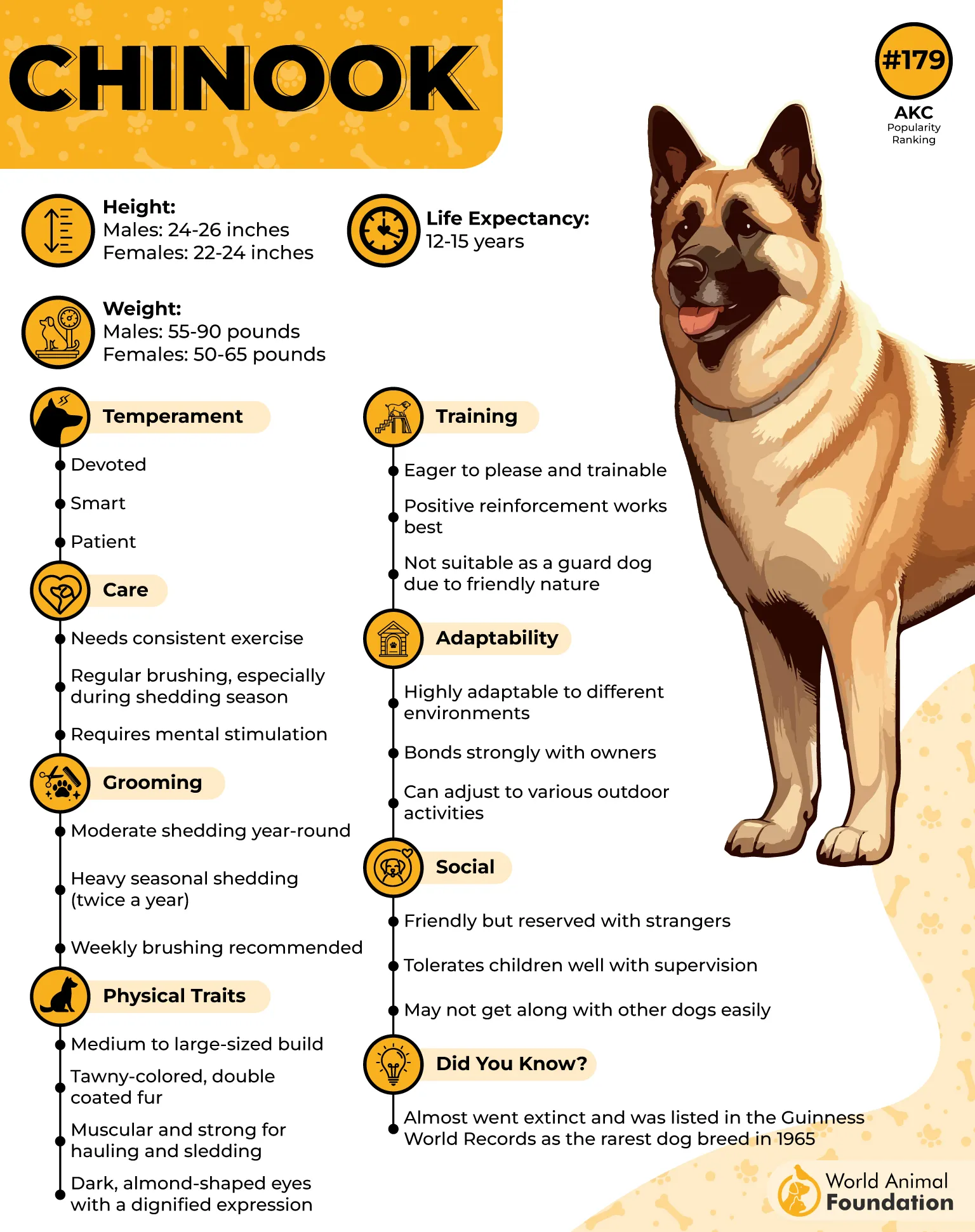
Unlike many traditional sled dogs, the Chinook is known for its affectionate nature, loyalty, and eagerness to please, making it an excellent family pet as well as a working dog.
As per PetMD, Chinooks enjoy being around their family members and other dogs. They can develop separation anxiety if left alone for extended periods.
It is intelligent and trainable, but it also requires regular exercise and mental stimulation to stay happy and healthy. Today, the Chinook is recognized as the state dog of New Hampshire and remains a symbol of the region’s pioneering sled dog history.
7. Greenland Dog
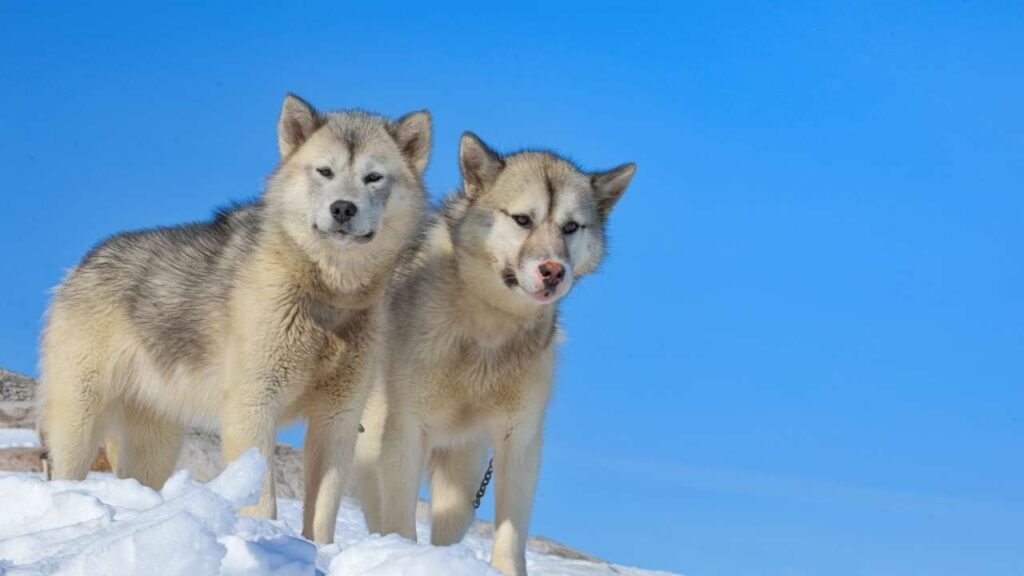
Say hello to the Greenland Dog, a rugged, ancient breed that could probably survive an ice age without breaking a sweat. Used by Inuit hunters and explorers like Knud Rasmussen, this dog is the definition of a survivalist—like Bear Grylls, but furrier and more judgmental when you drop your sandwich.
Greenland Dogs are pack-oriented and have a strong, independent nature, often displaying dominance and a high prey drive.
Why they’re awesome
Endurance for days – Can pull heavy sleds through frozen wastelands like it’s a walk in the park.
Independent mindset – They’ll follow your command… if you’ve earned their respect (and they’re not busy).
Built like a tank – Muscular, weatherproof, and a tail that curls like a cinnamon roll.
While they may not be overly affectionate in the traditional sense, they are deeply loyal and thrive when given a job to do. This breed plays a vital role in Greenland’s culture and heritage, still actively used today in sled dog teams.
Greenland Dogs aren’t for the casual pet owner—they need room to run and a job to do. But if you want a four-legged survival buddy who could pull you out of a blizzard, this is your dog.
8. Canadian Eskimo Dog
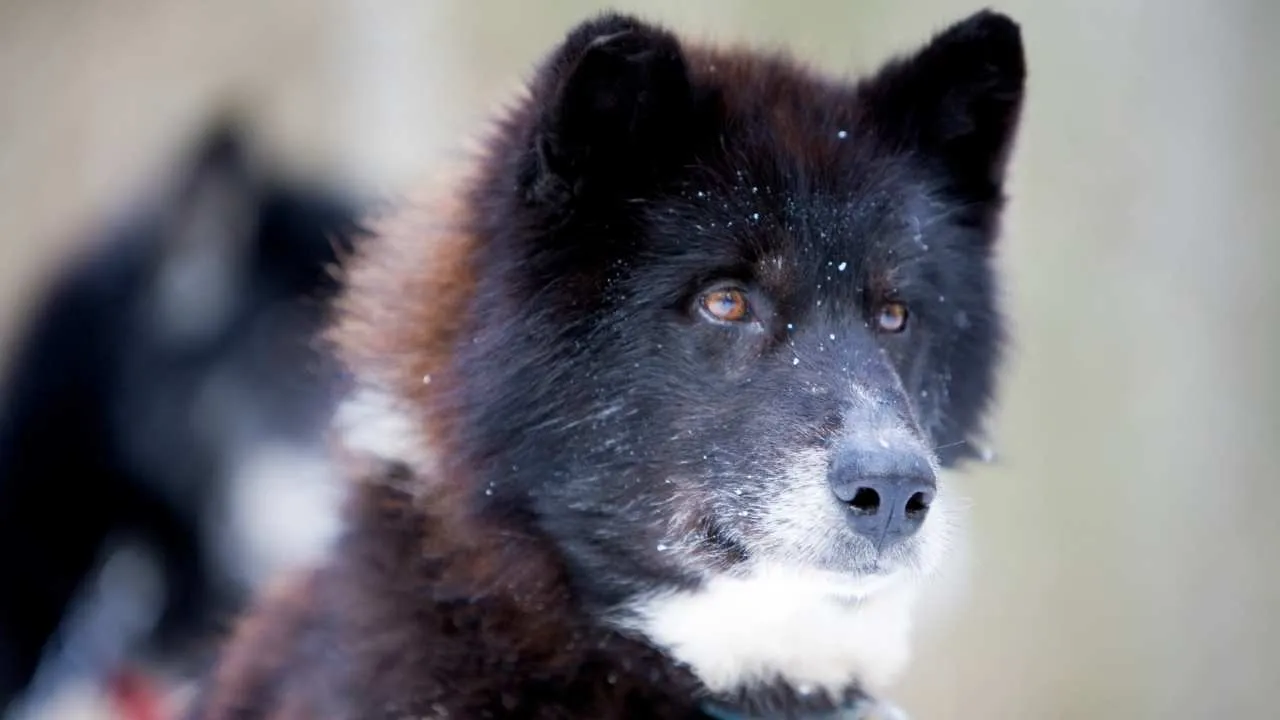
The Canadian Eskimo Dog (also called Qimmiq) is another ancient Arctic legend. This breed has worked alongside the Inuit people for over 4,000 years—hauling sleds, hunting seals, and probably judging humans for needing jackets in 30°C.
Canadian Eskimo Dog is known for its loyalty and endurance. The Canadian Eskimo Dog is highly intelligent but also independent, often displaying a strong prey drive and dominance.
Why do they deserve a round of a-paws
Hardcore work ethic – These dogs thrive in the cold and live for a challenge.
Stunning looks – Thick coat, bushy tail, noble face—it’s like a wolf decided to settle down and raise a family.
Vocal & bold – They will let you know if dinner is late. Or if the moon is too bright. Or if snow is falling weirdly.
As per Hill’s Pet, these dogs are friendly toward people but can be aggressive toward dogs outside their pack, with a tendency to fight, especially if they don’t receive enough work or activity. They are high-energy dogs.
The Canadian Eskimo Dog is best suited for experienced owners. They’re not lap dogs—they’re legacy dogs, here to remind you that life is an adventure.
9. Scandinavian Hound
If sledding had a Formula 1 team, the Scandinavian Hound would be their MVP. A modern crossbreed of Alaskan Huskies, German Shorthaired Pointers, and Greyhounds, these pups are bred for speed, stamina, and pure snow-fueled zoomies.
Unlike traditional sled dogs that are built more for strength and pulling power, the Scandinavian Hound is bred for sprint and mid-distance races, making it lighter, leaner, and faster. It has a short, dense coat that provides insulation without adding bulk, and its temperament is friendly, focused, and highly energetic.
Why they’re built differently
Lean and mean (but sweet) – They look like they belong in a sports magazine, but act like goofballs.
Made for racing – These are the dogs you see in professional skijoring and sprint mushing events.
Minimal fluff, maximum zoom – They might not look like traditional sled dogs, but boy, can they fly.
Scandinavian Hounds are high-energy athletes who need space to run and people who appreciate their need for speed. Think of them as the sled dog version of a caffeinated marathoner.
This breed thrives on physical activity and requires plenty of exercise, making it ideal for active owners who enjoy outdoor adventures like running, biking, or skijoring.
Conclusion
Sled dog breeds have long been celebrated for their strength, endurance, and resilience in some of the harshest climates on Earth. Known for their ability to pull heavy loads and work as a team in pulling sleds, these dogs have played vital roles in transportation, survival, and even exploration. In sled dog racing, the most critical position is the lead dog, guiding the pack with intelligence, confidence, and discipline.
Breeds like the Siberian Husky, Alaskan Malamute, and Samoyed are recognized as good sled dog choices due to their stamina, thick coats, and cooperative nature. Throughout history, famous sled dogs like Balto and Togo have demonstrated bravery and loyalty, earning a place in the hearts of dog lovers worldwide.
While it takes many sled dogs to complete a strong team, it’s their unity, training, and spirit that make them exceptional. Whether racing through snowy landscapes or serving as loyal companions, sled dog breeds continue to showcase their unique qualities and unmatched work ethic.


